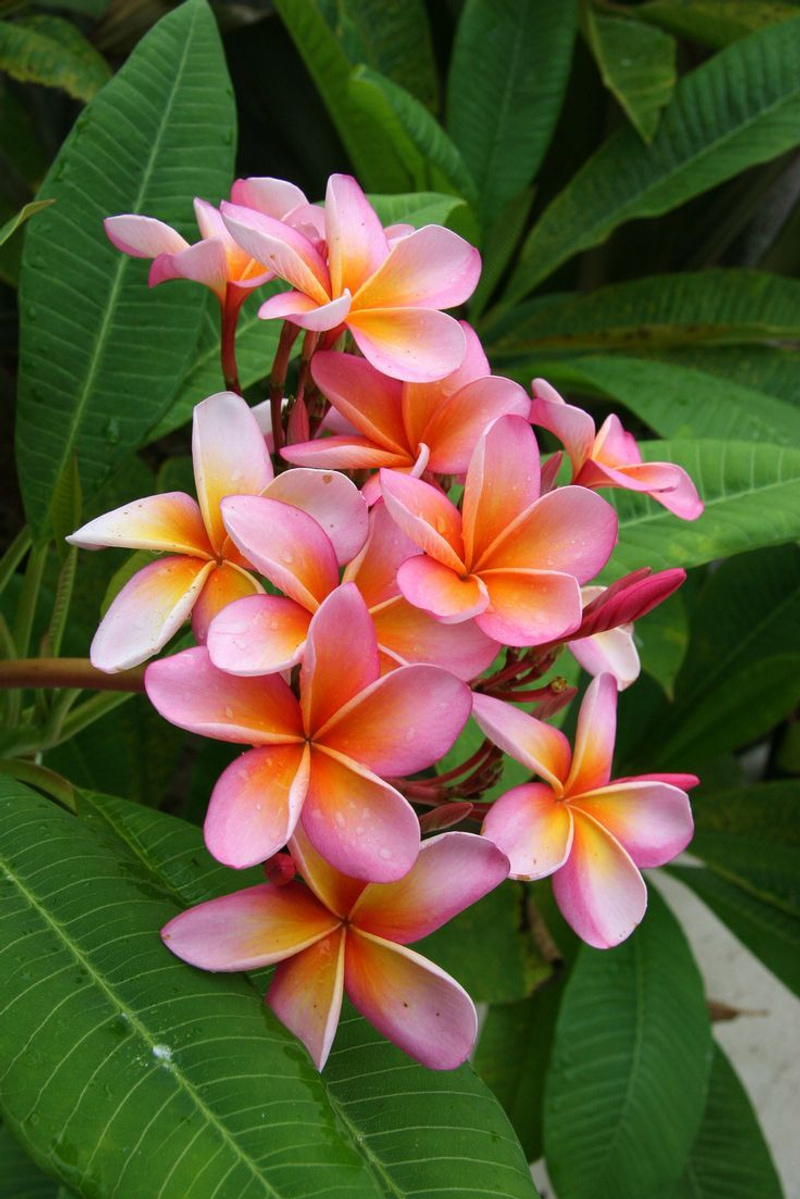Plumeria: An Enchanting Plant with Gorgeous Flowers and the Most Intoxicating Fragrance
Plumeria, also known as Frangipani, is a genus of flowering plants in the Apocynaceae family. This beautiful plant is native to the Caribbean, Central America, and South America, but has become popular in many other parts of the world due to its stunning flowers and intoxicating fragrance.
Mandevilla, a magical climbing plant for your pots yard and garden
The Beauty of Plumeria Flowers
Plumeria flowers are known for their stunning beauty and vibrant colors. They come in a wide range of colors, including pink, yellow, white, and red. The flowers have a unique shape, with five petals arranged in a spiral pattern. They are most commonly found in clusters at the ends of branches, making them an eye-catching addition to any garden or landscape.

The Fragrance of Plumeria Flowers
One of the most alluring aspects of the Plumeria plant is its fragrance. The scent of the flowers is sweet, heady, and intoxicating, often compared to the scent of jasmine or gardenia. The fragrance is particularly strong at night, making it a popular choice for gardens and landscapes that are enjoyed in the evening.
Cultivating Plumeria
In order to grow and care for plumeria, there are a few things you need to know. First, plumeria prefers warm climates and should be planted in well-draining soil. It should be planted in a sunny location, as it needs plenty of light in order to bloom.
How to grow Oenothera or Evening primrose in your garden
Once your plumeria is planted, you should water it regularly. Water the soil until it is moist, but be careful not to overwater. Plumeria also benefits from regular fertilization. Use a balanced fertilizer that is specifically formulated for tropical plants and apply it according to the instructions on the package.

Plumeria needs to be pruned regularly in order to keep its shape and encourage new growth. Prune the plant lightly, removing any dead or damaged branches. If the plant is becoming too large, you can also prune it back to its desired size.
Plumeria is also susceptible to pests and diseases. If you notice any signs of pests or disease, you should treat the plant immediately. Common pests include mealy bugs, aphids, and scale insects. Common diseases include leaf spot, stem rot, and root rot.
Caring for plumeria is relatively easy and can be quite rewarding. With the right care and maintenance, you can enjoy beautiful, fragrant plumeria blooms in your garden for years to come.
How to grow Lychnis coronaria in your pots and garden and 40 great landscape design ideas for inspiration
Plumeria in Culture and Tradition
Plumeria has a long history of cultural significance and has been used in traditional medicine and religious ceremonies in many parts of the world. In Hinduism, the plant is associated with devotion and is often used in religious ceremonies. In Hawaiian culture, Plumeria is a symbol of love and is commonly used in leis and other decorative arrangements.

Plumeria is a stunning plant with a rich history and a wide range of uses. Whether you are a gardener looking to add a touch of beauty and fragrance to your landscape or someone interested in exploring the cultural significance of this enchanting plant, Plumeria is a wonderful choice. With its gorgeous flowers and intoxicating fragrance, it is sure to bring joy and beauty to any setting.


































Images via: na-dache.pro





